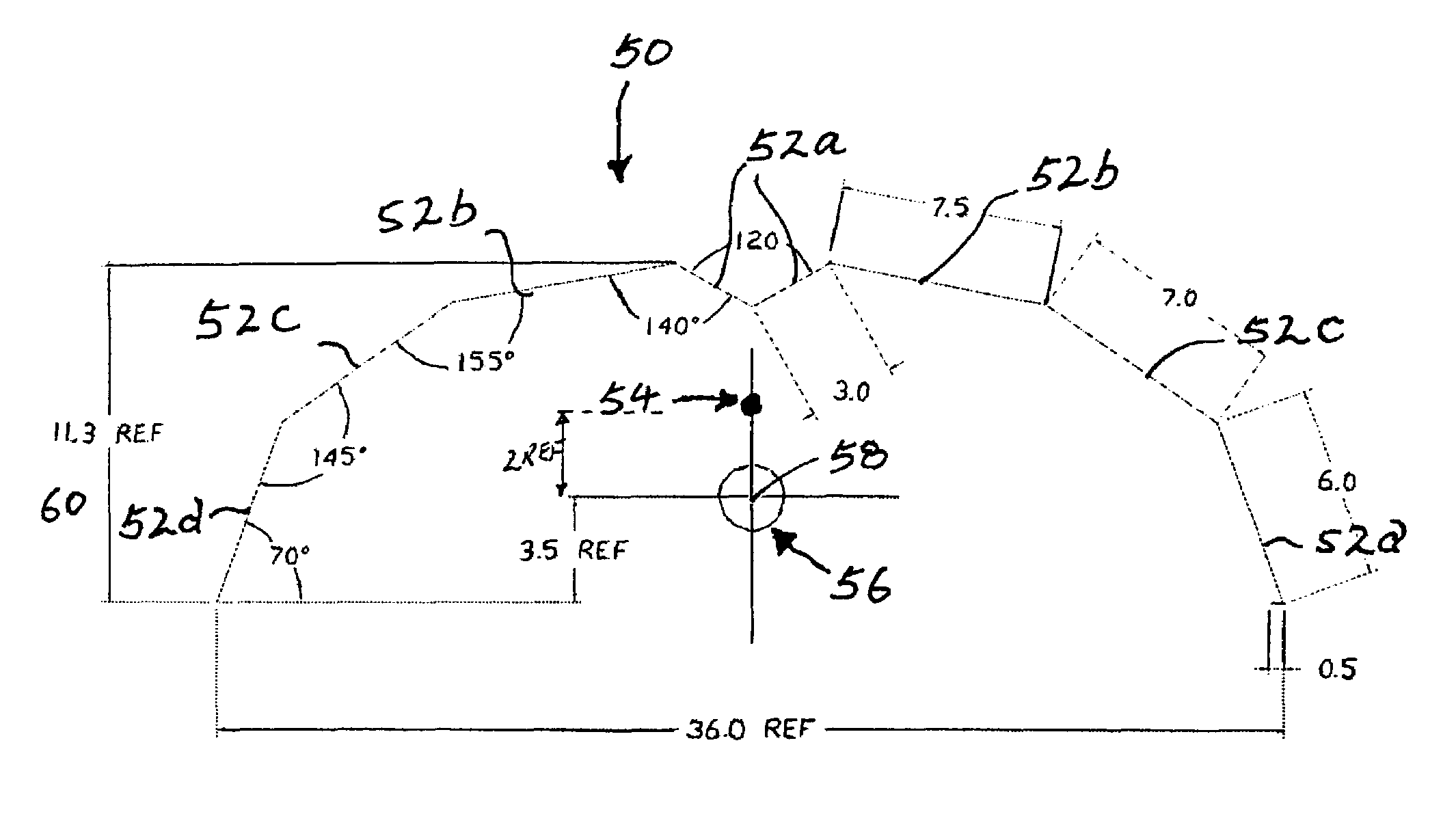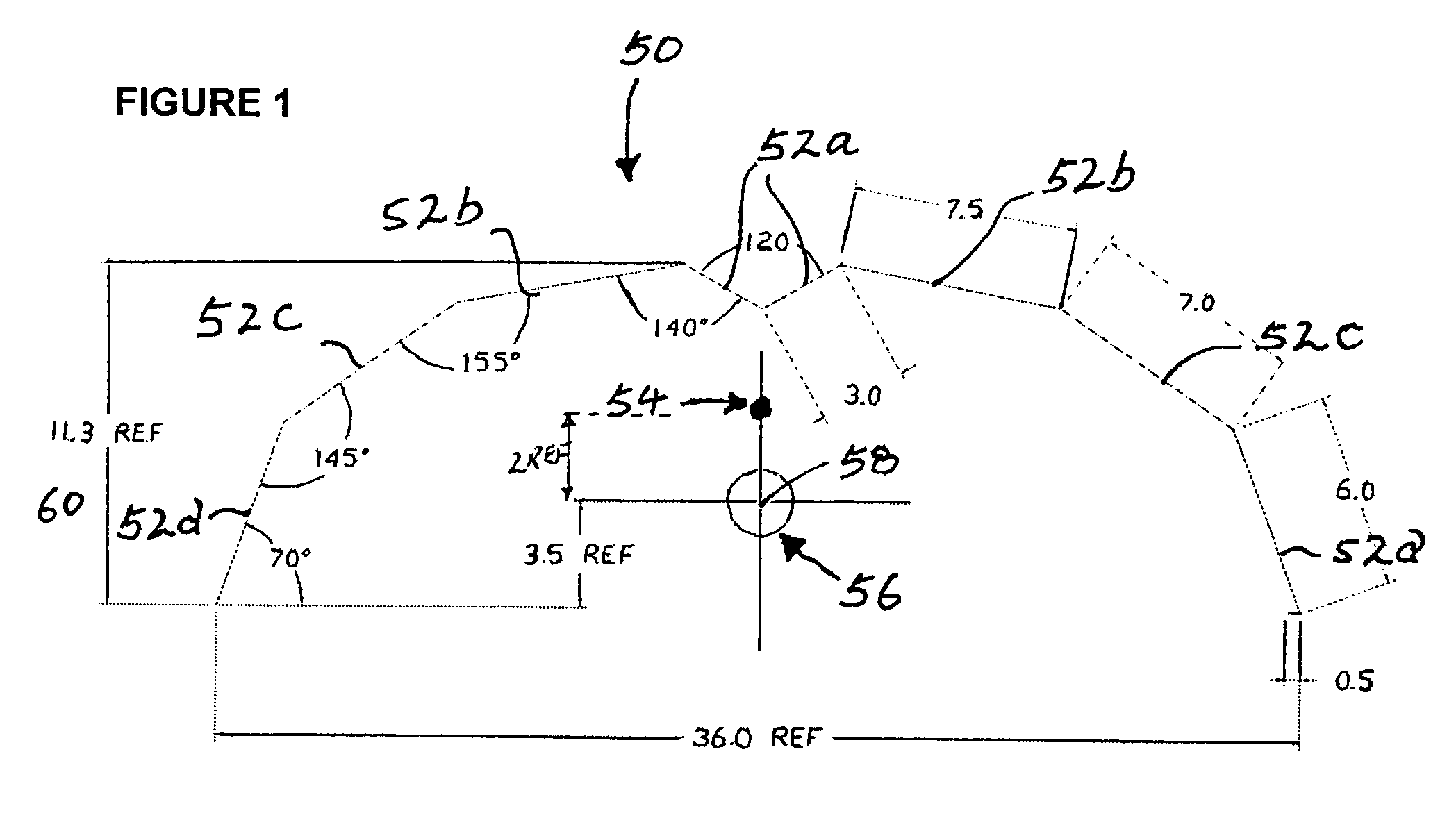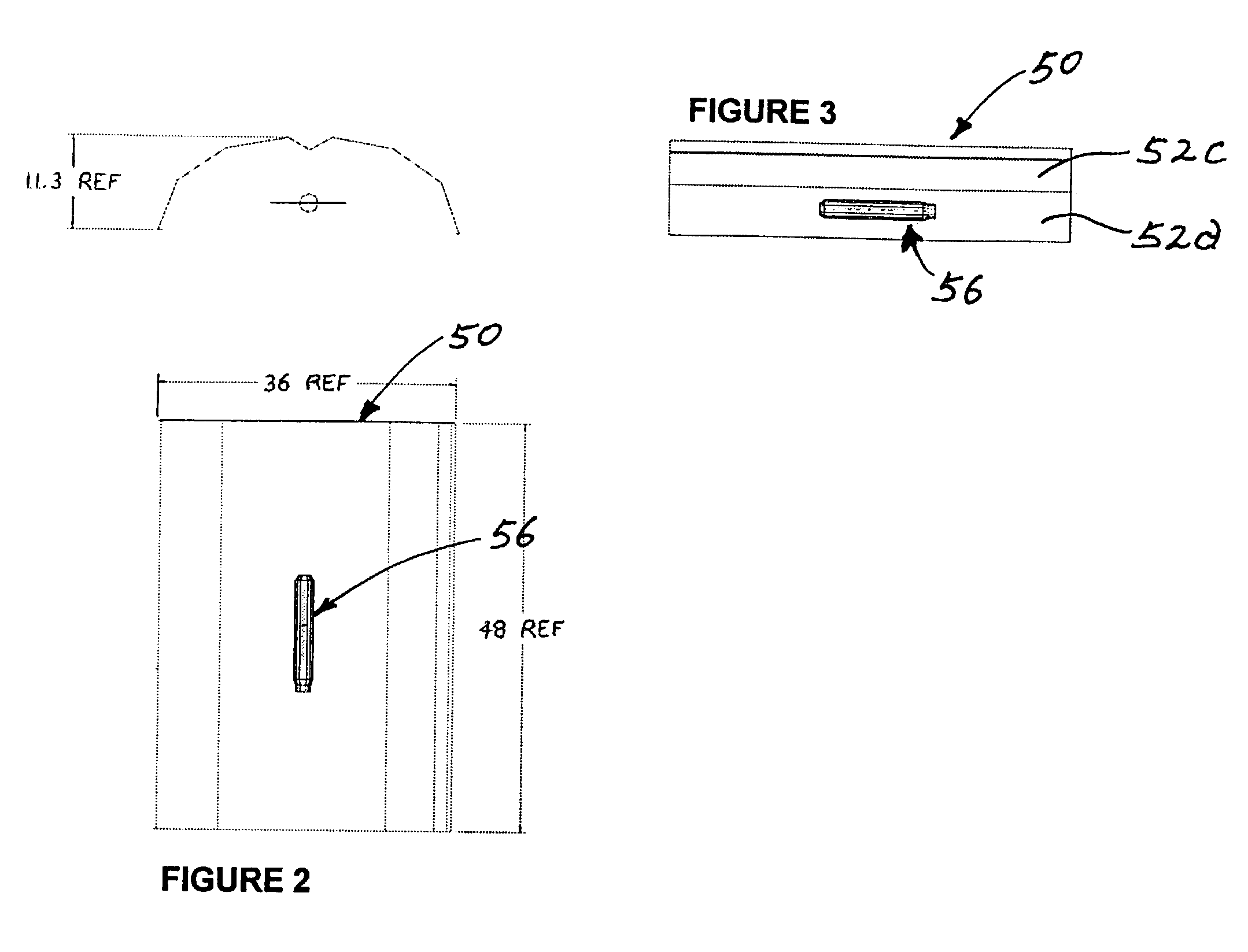Energy efficient lighting apparatus and use thereof
a lighting apparatus and energy-saving technology, applied in the field of energy-saving lighting apparatus, can solve the problems of inconvenient use, inconvenient maintenance, and inability to meet the needs of lighting and heating equipment, and achieve the effects of improving energy-efficiency, maximizing energy-efficiency, and distributing and uniforming light emissions
- Summary
- Abstract
- Description
- Claims
- Application Information
AI Technical Summary
Benefits of technology
Problems solved by technology
Method used
Image
Examples
example 1
Light Distribution from a Parabolic Apparatus of the Prior Art
[0151]The major objectives of the present invention are to provide improved lighting apparati that maximize efficiency, distribution as well as uniformity of light emissions from a light source.
[0152]Efficiency of each lighting apparatus, in the present case, is measured by the percentage of light emitted by the elongated light source that can exit the lighting apparatus with the fewest number of reflections off (or the least contact with) the elongated reflector means and correspondingly the amount of light emitted by the elongated light source that becomes absorbed, hence wasted, by the elongated reflector means. Distribution is currently measured and depicted by means of Candela polar plots. Most importantly, uniformity of light emissions within the field of distribution is measured and depicted by means of illuminance contour plots and illuminance shaded plots. These parameters for efficiency, distribution and uniform...
example 2
Light Distribution from a Parabolic Lighting Apparatus of the Present Invention with a Horizontally Disposed Elongated Light Source
[0164]FIGS. 14 and 15 illustrate the light distribution characteristics of the improved lighting apparatus as described in FIG. 4. Cross-referencing with FIG. 4, the elongated tubular light source 56 is a 1000 W 250V S52 high pressure sodium LU1000 lamp with an E-25 clear tubular bulb which is disposed centrally widthwise within the elongated reflector means and longitudinally along the about one-third of the length of said elongated reflector means. The longitudinal center axis 58 of said elongated tubular light source 56 is disposed along the elongated reflector means at 2″ beyond the optical center 54 of said elongated reflector means.
[0165]Referring to FIG. 14, this Candela polar plot illustrates the latitudinal and longitudinal directional distribution or dispersion of light as emitted by the elongated light source and as detected by a target situat...
example 3
Light Distribution from an Elliptical Lighting Apparatus of the Present Invention with a Horizontally Disposed Elongated Light Source
[0177]The present example compares the lighting characteristics of another improved lighting apparatus of the present invention comprising an elongated reflector means with a substantially elliptical cross section and a V-shape rib integral as illustrated in FIGS. 1 to 3.
[0178]For baseline measurements, the present elliptical lighting apparatus is tested with the same elongated light source (1000 W 250V S52 high pressure sodium LU1000 lamp with an E-25 clear tubular bulb) disposed longitudinally with its longitudinal center at the optical center of the elongated reflector means. FIGS. 18 illustrates a Candela polar plot for such a setup in which the 0° / Long line is relatively semi-circular implicating relative uniformity in longitudinal light emissions, while the 90° / Long line shows dramatic fluctuations which suggest uneven illumination and multiple “...
PUM
 Login to View More
Login to View More Abstract
Description
Claims
Application Information
 Login to View More
Login to View More - R&D
- Intellectual Property
- Life Sciences
- Materials
- Tech Scout
- Unparalleled Data Quality
- Higher Quality Content
- 60% Fewer Hallucinations
Browse by: Latest US Patents, China's latest patents, Technical Efficacy Thesaurus, Application Domain, Technology Topic, Popular Technical Reports.
© 2025 PatSnap. All rights reserved.Legal|Privacy policy|Modern Slavery Act Transparency Statement|Sitemap|About US| Contact US: help@patsnap.com



